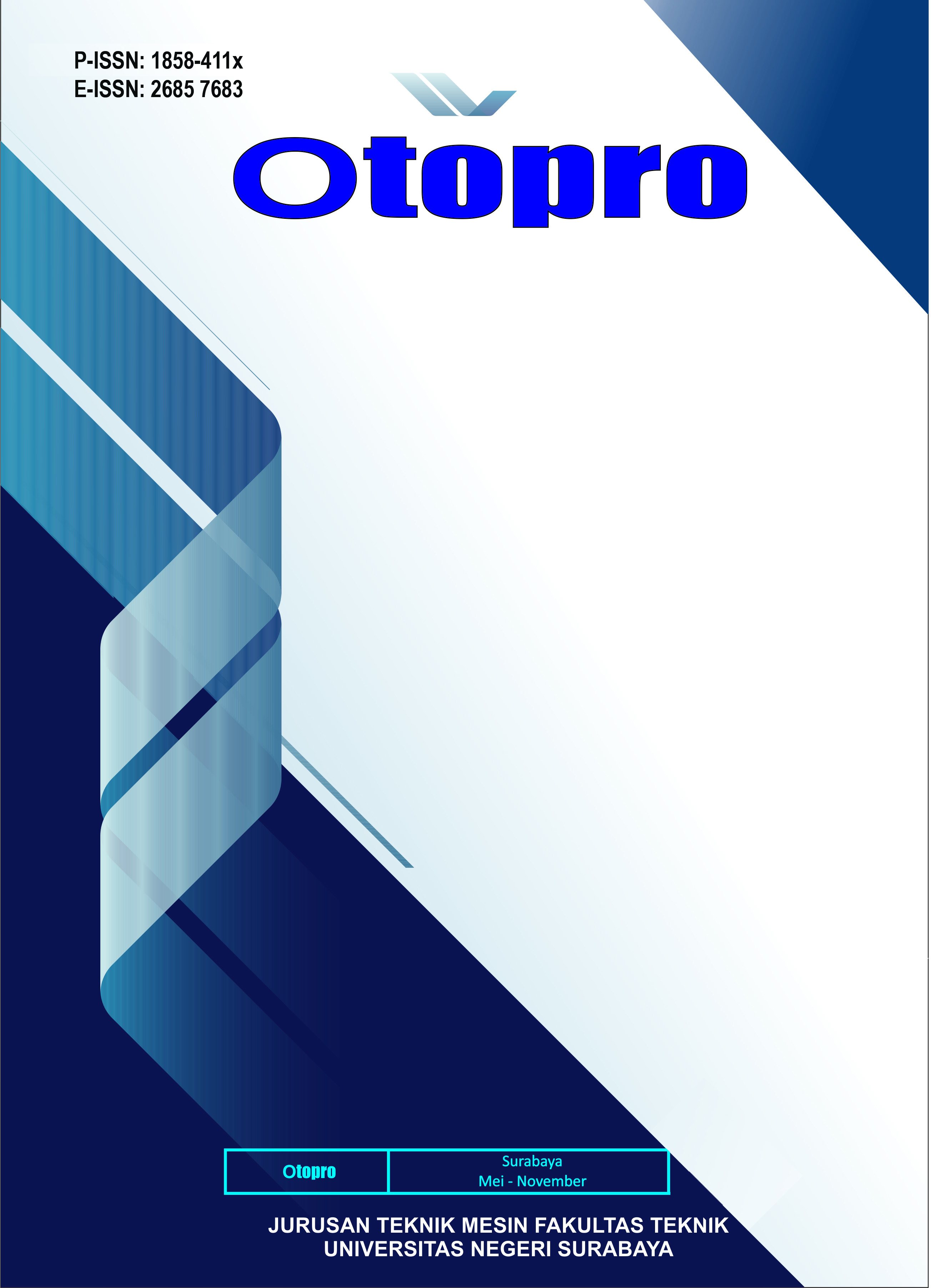PEMBUATAN BIOETANOL DARI NIRA AREN SEBAGAI ENERGI ALTERNATIF
DOI:
https://doi.org/10.26740/otopro.v18n1.p18-22Keywords:
palm sap, distillation, temperature, bioethanolAbstract
This research carried out the manufacture of bioethanol by utilizing palm sap as an alternative energy. Bioethanol is ethanol that can be produced through the fermentation of glucose, to produce bioethanol which is then carried out by distillation. Bioethanol is also a biofuel and one of its uses as an environmentally friendly alternative fuel. The goal to be achieved in this study is to produce bioethanol with the influence of the length of time of heating and the temperature of heating palm sap water in the distillation apparatus on the levels of bioethanol produced. The raw material for the production of bioethanol was palm juice with natural fermentation for three days, then heated in a distillation apparatus with a heating temperature of 84-86oC, 87-89oC and 90-92oC. and the standard measuring instrument used to measure bioethanol levels is an alcohol meter. The results of the research conducted, it can be seen that the effect of the length of time and temperature of heating palm sap in the distillation apparatus produces a volume of bioethanol of: 84-86oC = 256 ml, 87-89oC = 330 ml, 90-92oC = 383 ml, this can be seen also that the higher the heating temperature of the palm sap in the distillation apparatus resulted in a decrease in the bioethanol content, namely: 84-86oC = 83.8 %, 87-89oC = 80.8 %, 90-92oC = 77.6%. So to get a good bioethanol content, namely at a heating temperature of 84-86oC, produce bioethanol quality of 83.8%.
References
Niastiwa, Fransisca.,dkk. 2013. Pemanfaatan Nira Aren Menjadi Bioetanol Sebagai Bahan Bakar Alternatif. Banten: Cilegon. Universitas Sultan AgengTirtayasa.
Donny Fahmi, Bambang Susilo dan Wahyunanto Agung Nugroho. 2014. Pemurnian Etanol Hasil Fermentasi Kulit Nanas (Ananas comosus L. Merr) dengan menggunakan Distilasi Vakum. Jurnal Keteknikan Pertanian Tropis dan Biosistem. Vol. 2 No. 2, Juni 2014, 131-137
Effendi, D. S. 2010. Prospek Pengembangan Tanaman Aren (Arenga pinnata MERR) Mendukung Kebutuhan Bioetanol di Indonesia. Jurnal persektf (9)1: 36-46
F. Wenur1 dan Y. Waromi, 2017. Studi Pengolahan Bioetanol Tradisional Dari Nira Aren Di Minahasa Selatan Jurnal Teknologi Pertanian Volume 8, Nomor 2, Desember 2017
Heyko, E. 2012. Strategi Pengembangan Energi Terbarukan: Studi Pada Biodiesel, Bioethanol, Biomassa, dan Biogas di Indonesia. Universitas Brawijaya. Malang.
Tangkuman, D. Herling.., dkk. 2010. Cara Memproduksi Bioetanol Dari Nira Aren Mengunakan Energi Geotermal .hal .23 Manado: Universitas Sam Ratulangi.
Khaidir, Dwi Setyaningsih, dan Hery Haerudin 2012, Dehidrasi Bioetanol Menggunakan Zeolit Alam Termodifikasi Jurnal Teknologi Industri Pertanian Vol.22 (1):66-72.
Meilani M Manurung, 2016, Pembuatan Bioetanol Dari Nira Aren (Arenga pinnata Merr) Menggunakan Saccharomyces cerevisiae Jurnal Teknik Kimia USU, Vol. 5, No. 4

Downloads
Published
How to Cite
Issue
Section
License

This work is licensed under a Creative Commons Attribution-NonCommercial 4.0 International License.
 Abstract views: 984
,
Abstract views: 984
, PDF Downloads: 972
PDF Downloads: 972


3.png)










